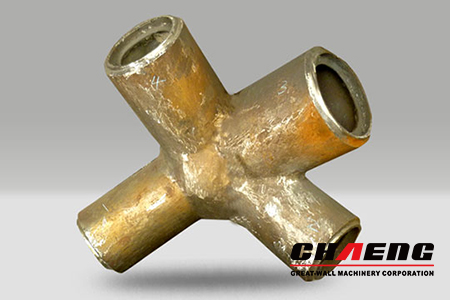The Balance Design of Cast Steel Nodes
Casting steel nodes are being increasingly popular in steel structure joint application as their advanced mechanical performances and flexible forms. This kind of joints improves the structural antifatigue capability observably and is expected to be widely used in the structures with fatigue loadings.

Casting steel node joint consists of two parts: casting itself and the welds between the node and the steel member. The fatigue resistances of these two parts are very different; the experiment results showed very clearly that the fatigue behavior was governed by the welds in all tested configurations.
This artical focuses on the balance fatigue design of these two parts in a casting steel node joint using fracture mechanics and FEM. The defects in castings are simulated by cracks conservatively. The final crack size is decided by the minimum of 90% of the wall thickness and the value deduced by fracture toughness.
The allowable initial crack size could be obtained through the integral of Paris equation when the crack propagation life is considered equal to the weld fatigue life; therefore, the two parts in a cast steel node joint will have a balance fatigue life.
